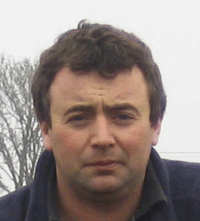Farmer Focus Arable: Philip Reck ready for spring spraying programme

The recent cold, dry spell has allowed us to make a start cultivating the earlier, lighter ground.
The impact of the heavy frosts is quite apparent in the condition of the soil. Small lumps break easily when rolled in your hand, making an ideal seed-bed for spring barley.
Soil temperatures are low, though, and they will need to increase before any drilling can take place. The crows would certainly appreciate a drilled field to feast upon. We hope we can make a start drilling early to mid-March if drying improves. This is the ideal time to drill spring barley in this area to maximise yield.
Azalea and Frontier will dominate the spring barley plantings. Azalea will be sown on the earlier, light ground and its capability to ripen early will help spread the workload at harvest.
Regardless of sowing date, spring barley ripens in a short window at the harvest. Quench will be sown on the later ground and a small acreage of the high yielder Propino will also be sown to evaluate it potential for a larger acreage for next year.
The spring barley herbicide will again be Calibre Max (thifensulfuron methyl + tribenuron methyl) and Starane (Fluroxypyr) with an added insecticide. Grass weeds are under control over most of the farm so Arelon (isoproturon) will be applied to any known problem areas only if necessary.
Winter wheat will also be due its herbicide once conditions allow. A wet November and cold December meant the planned application of Alister (mesosulfuron-methyl + iodosulfuron + diflufenican) was shelved until spring as soon as the weather gets warmer. Nitrogen will also be applied once growth begins to reappear to help kick start the crop after the cold winter. Air and soil temperatures are still too low, but will improve quickly at this time of the year.
Farmer Focus writers
More columns from Philip Reck

